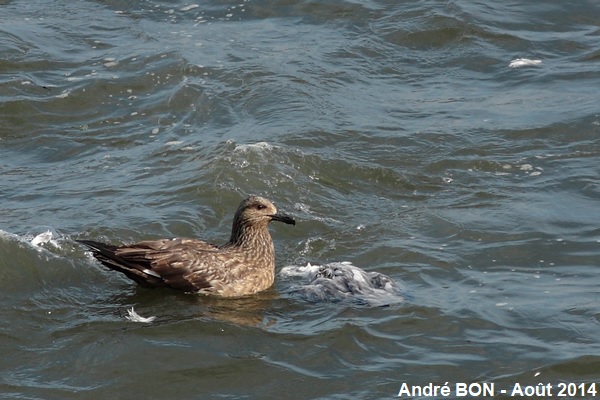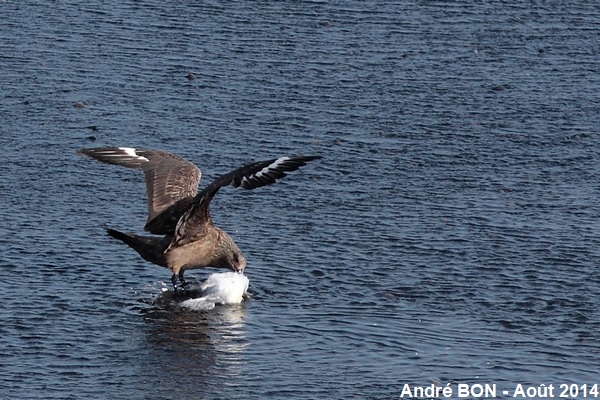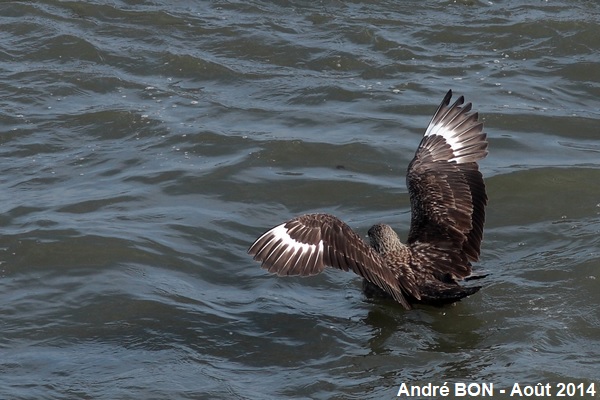


| Great Skua (Stercorarius skua (Brunnich, 1764)) |



|
|
Scientific name: Stercorarius skua (Brunnich, 1764) Common name: Great Skua French name: Grand Labbe, Grand Skua. Order: Charadriiformes Family: Stercorariidae Size: Body size: 53 to 58 cm; Wingspan: 132 to 140 cm; Weight: 1.1 to 1.7 kg. Habitat: Great Skuas are sea birds which live most often offshore and only come to the coasts during the nesting period. Food: Great Skuas are predators which feed on young birds, eggs and fishes. They are also kleptoparasites which steal preys from other species by attacking them. Nesting: Great Skuas nest on the ground in small colonies. The very simple nest is located in a small depression. There are generally two eggs per clutch. Migration: Great Skuas move southwards in winter. You can observe them as far as the Tropic of Cancer. Geographic area: North Atlantic. |
Great Skuas show a large rounded body. The tail is short. The plumage is globally blackish brown sometimes spotted or striated with light colour. The base of the primary remiges is white and clearly visible in flight. The tail is blackish. The strong and slightly hooked bill is blackish. The palmated legs are black. You can observe three other species of the same family in the northern hemisphere, that's to say the Pomarine Jaeger (Stercorarius pomarinus), the Parasitic Jaeger (Stercorarius parasiticus) and the Long-tailed Jaeger (Stercorarius longicaudus). In flight, compared to these other species, the Great Skua shows wider wings with a more rounded tip. The body is larger. The tail is short and without any projection. |
| [To know more about the Great Skua] [Next picture] [Top] |

|
I have observed this Great Skua at the bottom of a cliff where Arctic Fulmars are nesting. It killed a chick, fallen down from its nest, at rising tide. |
| [To know more about the Great Skua] [Next picture] [Previous picture] [Top] |

|
Here is the start of the predation scene. |
| [To know more about the Great Skua] [Previous picture] [Top] |

|
You can clearly see the white base of the primary remiges on this picture. |